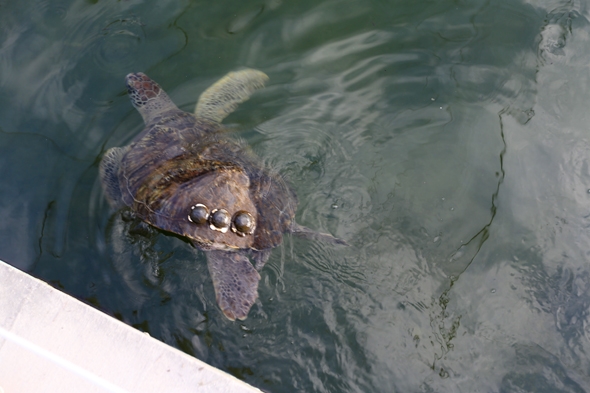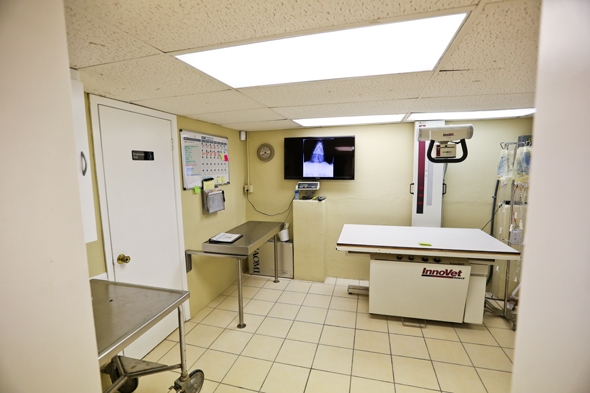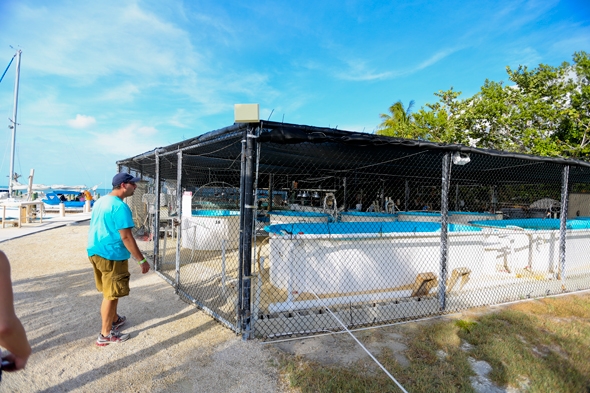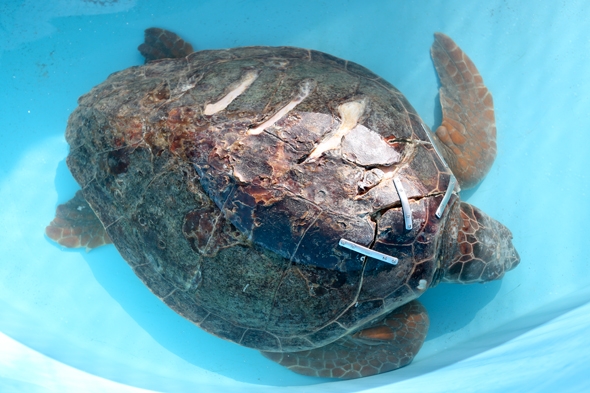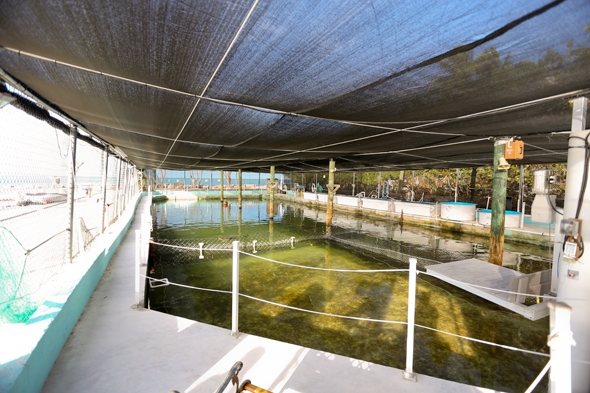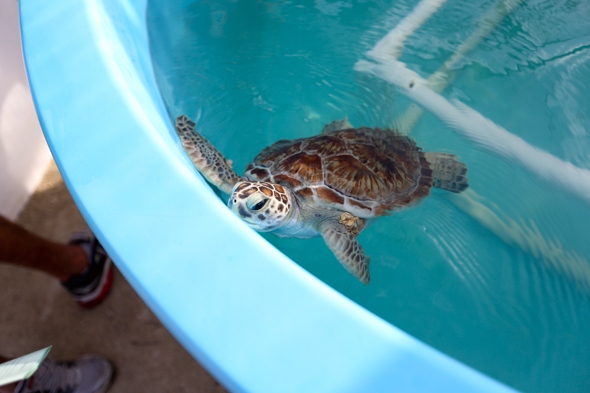
14 Jul Turtle Hospital in The Florida Keys
If you happen to be taking a road trip through the Florida Keys, keep your eyes peeled for a small building that goes by the name, The Turtle Hospital. This little green building is the home of the first ever turtle hospital. In fact, it is still the only state-certified veterinary hospital for sea turtles in the entire world. It was opened in 1986 in Marathon, FL, an island in the lower Florida Keys, and the facility’s goals are to help turtles survive, educate the public, participate in turtle research, and work on environmental legislation to make sea turtles more safe. In its 25+ years, the hospital has made quite an impact with its desire to rehabilitate, research and release sea turtles.
The story of how the hospital started out is pretty interesting. Before becoming a turtle hospital, part of the property was a hotel with a saltwater swimming pool (another part of the property was an adult dance club at one point, too). The owner decided to make the pool into a saltwater aquarium with fish so people could snorkel; after many inquiries about adding a sea turtle to the mix, he decided to look into getting a sea turtle. After following up with the government on legally obtaining a sea turtle, he learned the only way to keep one on site was if the property was a rehabilitation project since sea turtles are endangered and protected. Thus, the turtle hospital was born and over the years, it has grown into what it is today.
Tours through the facility are offered daily–while you wait for your tour, there is a gift shop and small room full of turtle facts and information to explore. Visiting the hospital was just as interesting as our evening at the sea turtle hatchling release–and one we cherish just as much!
Once the tour officially starts, you will learn about sea turtles and the hospital in a classroom like setting for around 45 minutes. The information we were able to absorb was interesting and slightly disturbing at the same time.
There are 5 different types of sea turtles found in the Florida waters: Loggerhead, Green Turtle, Leatherback, Kemps Ridley and Hawksbill. Unfortunately, human impact plays a large part in the decline of the sea turtle population. Because turtles will eat almost anything, they end up eating trash, litter and hooks found in the ocean. This causes impactions as they are not able to break down synthetic material or digest it, which usually leads to starvation. Entanglement is another major issue for turtles–getting caught in fishing line and buoy lines happens quite often. Getting trapped in a fishing line will likely cause the turtle (or other marine life) to drown or possibly lose a flipper.
The last main reason humans impact turtles is by hitting them with their boats–when a turtle is hit by a boat, it can crack their shell or put a permanent dent in it. A dent in a turtles shell can create an air pocket which will prohibit them from diving for their food. One fix for this is to put weights on the turtles shell, which will enable them to dive, but this is only a temporary fix as the weight can fall off. There is a permanent resident at the hospital with this problem, and this turtle affectionately received the name “bubble-butt” due to the large bubble on the backside of her shell–this turtle has become the most famous resident and visitors love seeing her on repeat visits.
Of course there are many other ways turtles are harmed, by humans and nature, and tumors are another danger for turtles. Fibropapilloma tumors are debilitating and require surgery. After surgery to remove a tumor, the recovery time is typically over 1 year. The next part of the tour led us through the actual hospital portion of the facility. We saw the area where surgery is performed, x-rays are taken and check ups are given. A max of 40 turtles can be housed at the facility at a time, and there are 23 hospital beds. One turtle named Farley, weighed over 400 lbs, and almost broke the hospital table! Sadly, his leg had to be amputated due to a lobster trap, but I just can’t imagine how big he must have looked on the table.
The ultimate goal of the hospital is to rehabilitate and release the turtles, which they are able to do most of the time; however, when a turtle is deemed unfit for the wild, they will give them a permanent home at their facility or another one equipped to care for the turtle. The Turtle Hospital houses its permanent residents and rehabilitating turtles out back in the saltwater pool and hospital tanks.
Finally, catching a glimpse of the turtles is the last stop on the tour, and we were all giddy with excitement to see them. They are adorable and fascinating creatures–we saw everything from full-grown turtles to tiny little newborns. Once we made our way to the pool, it was feeding time, so we were able to feed the turtles lettuce for some up close and personal time.
Thankfully, there are places like this to help care for injured turtles, but we need to remember to do our part, as well. Please remember to dispose of trash properly no matter if you are on the water or land, watch out for turtles when boating, don’t leave fishing line or hooks in the water, donate to the cause and if you see a turtle in need, call the Florida Fish & Wildlife Conservation Commission at 1-888-404-FWCC.
Reservations are required for the tour, and can be made by calling 305-743-2552. Please note, that since it is a working hospital, tours are subject to cancellation for turtle emergencies.





